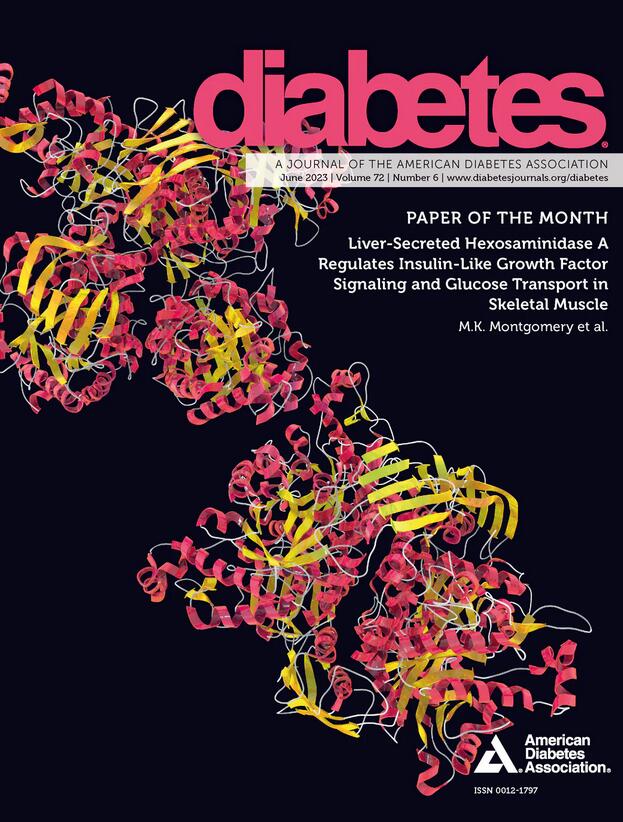813-P:基于机器学习的2型糖尿病患者胰岛素泵初始剂量预测模型
IF 7.5
1区 医学
Q1 ENDOCRINOLOGY & METABOLISM
引用次数: 0
摘要
前言和目的:准确的胰岛素初始剂量对2型糖尿病患者胰岛素泵的最佳血糖控制至关重要。由于2型糖尿病的异质性,传统的基于体重的估计缺乏精度,强调需要先进的预测方法。本研究开发了机器学习模型,以提高初始餐前和基础剂量预测的准确性。方法:采用广西医科大学第一附属医院1245例患者的数据进行模型构建和内部验证,采用中山纪念医院60例患者的数据进行外部验证。接受胰岛素泵治疗的18-79岁2型糖尿病患者纳入研究,入院后24小时内收集数据。排除有严重合并症、急性并发症或器官衰竭的患者。采用随机森林、XGBoost、GBM、SVM和贝叶斯回归相结合的堆叠集成框架。模型1预测餐前胰岛素剂量,模型2根据模型1的输出预测基础胰岛素剂量。使用RMSE、MAE和MAPE评估性能。结果:模型1内部验证的RMSE为1.10 IU, MAE为0.79 IU, MAPE为19.10%;外部验证的RMSE为1.21 IU, MAE为0.88 IU, MAPE为17.83%。模型2内部验证的RMSE为2.31 IU, MAE为1.80 IU, MAPE为18.66%;外部验证的RMSE为3.89 IU, MAE为3.21 IU, MAPE为23.47%。与传统方法相比,机器学习模型在餐前和基础剂量预测中显著降低了RMSE、MAE和MAPE。预测模型可在https://rongxi.shinyapps.io/Pump/上作为基于网络的计算器获得。结论:机器学习模型准确预测胰岛素泵初始剂量,优于传统方法,为优化2型糖尿病患者胰岛素泵治疗提供了实用工具。唐:没有。王:没有。容:没有。广西医科大学第一附属医院临床研究“爬坡”项目资助(YYZS2023010);广西医科大学学生创新创业训练计划项目(X202310598348、S202410598192)本文章由计算机程序翻译,如有差异,请以英文原文为准。
813-P: Machine Learning–Based Prediction Models for Initial Insulin Pump Dosing in Type 2 Diabetes Patients
Introduction and Objective: Accurate initial insulin dosing is essential for optimal glycemic control in type 2 diabetes patients with insulin pumps. Traditional weight-based estimations lack precision due to the heterogeneity of type 2 diabetes, underscoring the need for advanced predictive approaches. This study developed machine learning models to enhance the accuracy of initial premeal and basal dose predictions. Methods: Data from 1,245 patients at the First Affiliated Hospital of Guangxi Medical University were used for model construction and internal validation, and 60 patients from Sun Yat-sen Memorial Hospital for external validation. Adults aged 18-79 years with type 2 diabetes who initiated insulin pump therapy were included, with data collected during the first 24 hours following admission. Patients with severe comorbidities, acute complications, or organ failure were excluded. A stacked ensemble framework combining random forest, XGBoost, GBM, SVM, and Bayesian regression was used. Model 1 predicts premeal insulin doses, and Model 2 basal doses based on Model 1’s outputs. Performance was evaluated using RMSE, MAE, and MAPE. Results: Model 1 achieved an RMSE of 1.10 IU, MAE of 0.79 IU, and MAPE of 19.10% for internal validation, and an RMSE of 1.21 IU, MAE of 0.88 IU, and MAPE of 17.83% for external validation. Model 2 achieved an RMSE of 2.31 IU, MAE of 1.80 IU, and MAPE of 18.66% for internal validation, and an RMSE of 3.89 IU, MAE of 3.21 IU, and MAPE of 23.47% for external validation. Compared to traditional methods, machine learning models significantly reduced RMSE, MAE, and MAPE in both premeal and basal dose predictions. The prediction models are available as a web-based calculator at https://rongxi.shinyapps.io/Pump/. Conclusion: The machine learning models accurately predict initial insulin pump dosing and outperform traditional methods, offering a practical tool for optimizing therapy in type 2 diabetes patients with insulin pump treatment. Disclosure M. Tang: None. X. Wang: None. X. Rong: None. Funding the Clinical Research 'Climbing' Program of the First Affiliated Hospital of Guangxi Medical University (YYZS2023010); Guangxi Medical University Student Innovation and Entrepreneurship Training Program Project (X202310598348 and S202410598192)
求助全文
通过发布文献求助,成功后即可免费获取论文全文。
去求助
来源期刊

Diabetes
医学-内分泌学与代谢
CiteScore
12.50
自引率
2.60%
发文量
1968
审稿时长
1 months
期刊介绍:
Diabetes is a scientific journal that publishes original research exploring the physiological and pathophysiological aspects of diabetes mellitus. We encourage submissions of manuscripts pertaining to laboratory, animal, or human research, covering a wide range of topics. Our primary focus is on investigative reports investigating various aspects such as the development and progression of diabetes, along with its associated complications. We also welcome studies delving into normal and pathological pancreatic islet function and intermediary metabolism, as well as exploring the mechanisms of drug and hormone action from a pharmacological perspective. Additionally, we encourage submissions that delve into the biochemical and molecular aspects of both normal and abnormal biological processes.
However, it is important to note that we do not publish studies relating to diabetes education or the application of accepted therapeutic and diagnostic approaches to patients with diabetes mellitus. Our aim is to provide a platform for research that contributes to advancing our understanding of the underlying mechanisms and processes of diabetes.
 求助内容:
求助内容: 应助结果提醒方式:
应助结果提醒方式:


